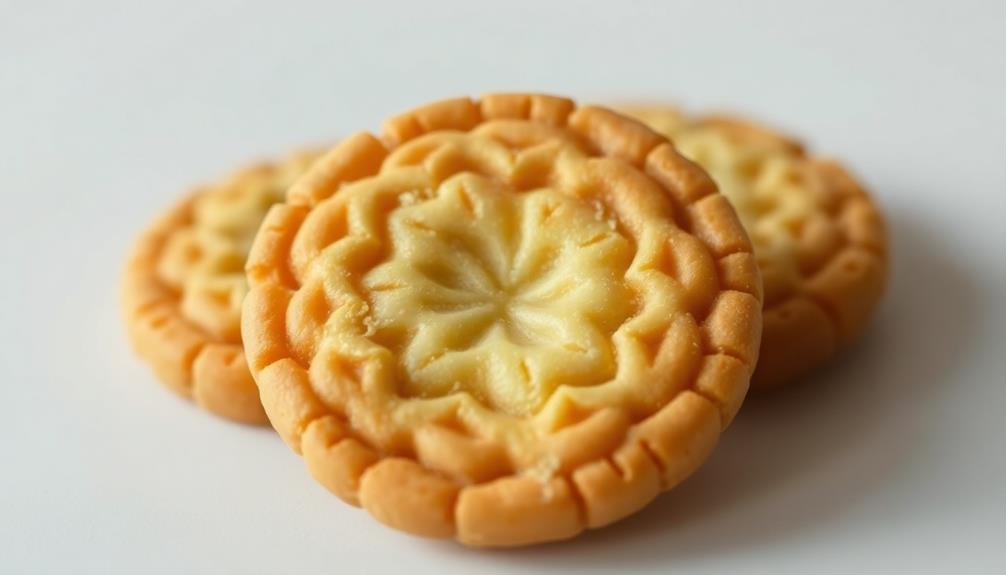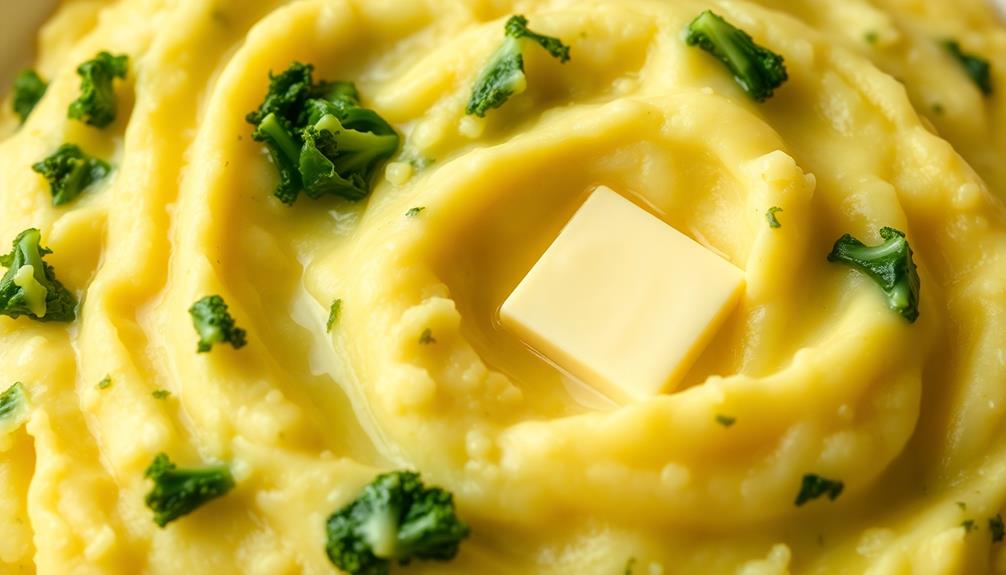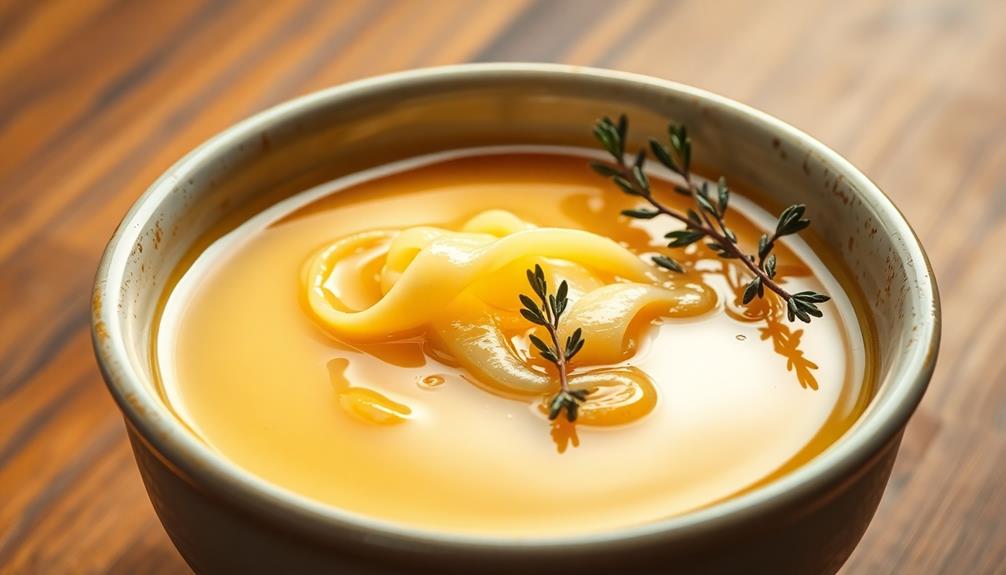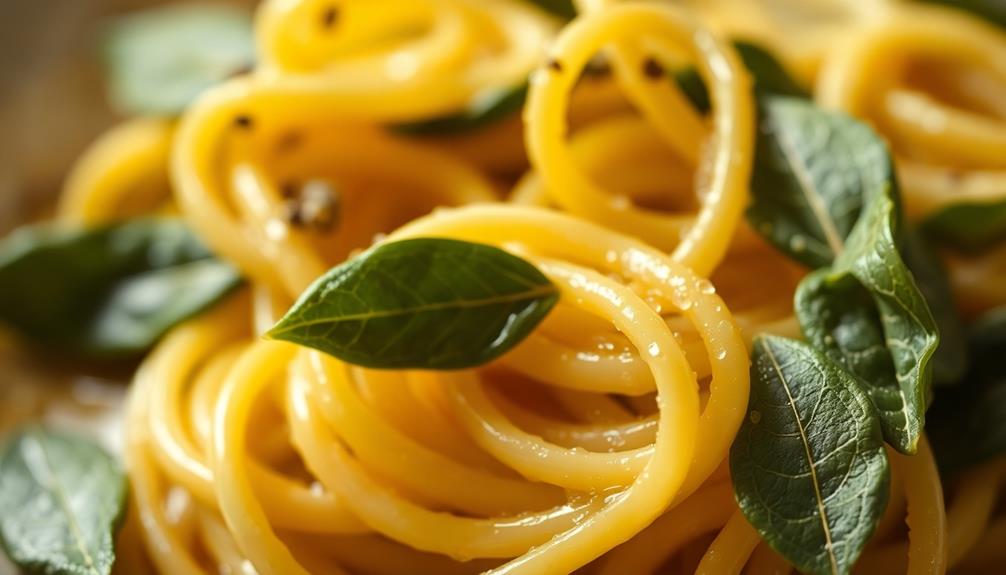Indulge in the heavenly delicacy that is the Swedish butter cookie, or spritz. These melt-in-your-mouth morsels boast a rich, buttery flavor and crumbly texture that's perfect for pairing with a warm cup of coffee or tea. Crafted with quality ingredients like creamed butter, sugar, and vanilla, these cookies are pressed through a cookie press to create intricate, decorative shapes. Their history dates back to the 19th century, firmly rooted in Swedish culture and cherished during the holiday season. With the right technique and a chilled dough, you'll soon be savoring the timeless appeal of these delightful treats. Curious to uncover more?
Key Takeaways
- Swedish butter cookies, also known as spritz cookies, have a rich, buttery flavor and a delicate, crumbly texture that melts in your mouth.
- These cookies have a long history in Swedish households, dating back to the 19th century, and are a cherished part of Swedish culture.
- The use of a cookie press to shape the dough into intricate designs, such as wreaths, stars, and florals, adds to the visual appeal of these cookies.
- Quality ingredients, proper dough handling, and chilling the dough are crucial for achieving the perfect melt-in-your-mouth consistency.
- Swedish butter cookies are typically enjoyed during "fika," a traditional Swedish coffee break with friends and family, and can be served as a homemade gift or on dessert platters.
History
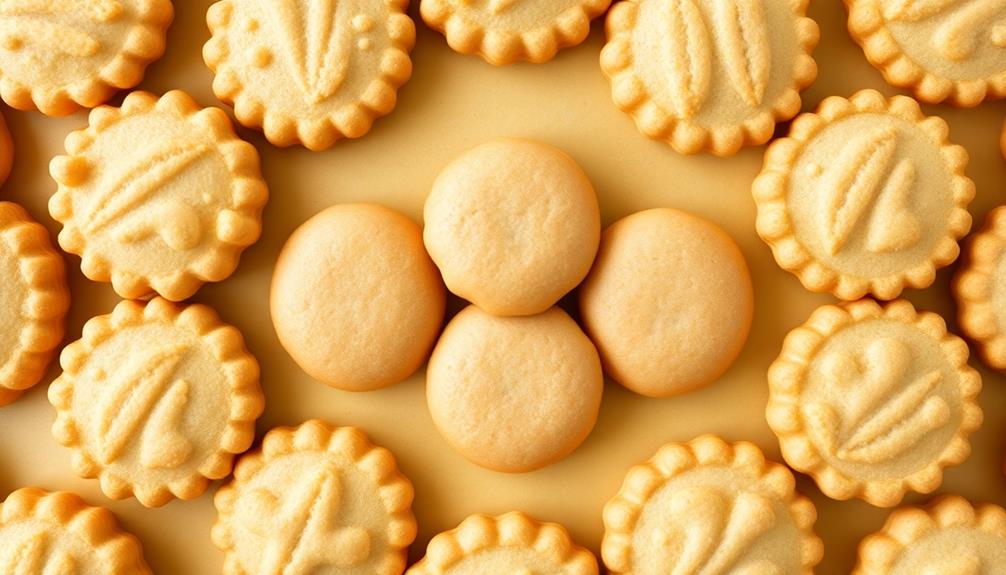
The origin of Swedish butter cookies can be traced back to the 19th century, when they were a popular treat among Swedish households.
These delicate, crumbly cookies were often enjoyed during fika, the beloved Swedish tradition of taking a coffee break with friends and family. Back then, the cookies were shaped by hand and baked to a light golden hue, their buttery aroma filling the air.
Over time, the recipe evolved, with bakers experimenting with different shapes and flavors.
The iconic spritz cookie design, created by pressing the dough through a cookie press, became a hallmark of the Swedish butter cookie. This method allowed for intricate, decorative patterns that added visual appeal to the already tempting treats.
Today, Swedish butter cookies remain a cherished part of Swedish culture, enjoyed year-round but especially during the holiday season when they're a staple on festive cookie trays.
Recipe
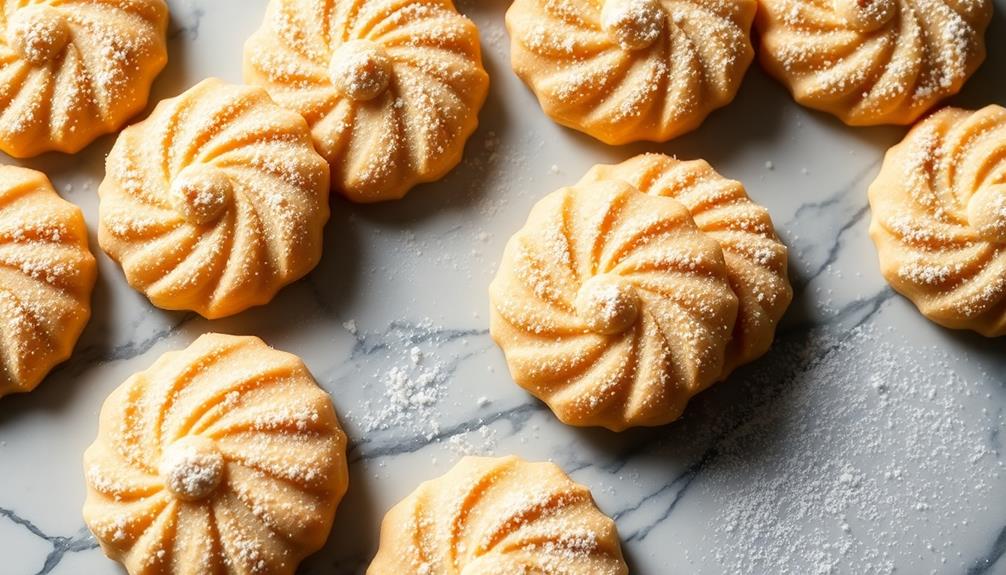
Swedish Butter Cookies are a classic holiday treat, beloved for their rich, buttery flavor and delicate, crumbly texture. These cookies are a simple pleasure, perfect for enjoying with a warm cup of coffee or tea.
Maintaining a clean kitchen environment while baking can enhance your overall experience, as it reduces the risk of allergens and promotes a healthier space for food preparation. The key to achieving the perfect Swedish Butter Cookie lies in the quality of the ingredients and the careful handling of the dough. By using high-quality butter and taking the time to chill the dough before baking, you can ensure that your cookies come out of the oven with a delightful melt-in-your-mouth consistency.
Ingredients:
- 1 cup (2 sticks) unsalted butter, softened
- 3/4 cup granulated sugar
- 1 egg yolk
- 2 teaspoons vanilla extract
- 1/4 teaspoon salt
- 2 1/4 cups all-purpose flour
Cooking Instructions:
Preheat your oven to 350°F (175°C). In a large mixing bowl, cream the softened butter and sugar together until light and fluffy. Beat in the egg yolk and vanilla extract, then stir in the salt and flour until a dough forms. Chill the dough in the refrigerator for at least 30 minutes.
Once chilled, roll the dough into 1-inch balls and place them about 2 inches apart on a parchment-lined baking sheet. Bake for 12-15 minutes, or until the cookies are lightly golden around the edges. Allow the cookies to cool on the baking sheet for a few minutes before transferring them to a wire rack to cool completely.
When making Swedish Butter Cookies, be mindful not to overbeat the dough, as this can lead to a tough, dense texture. Additionally, be sure to use high-quality butter and avoid overbaking the cookies, as they can quickly go from perfectly golden to dry and crumbly.
Following these tips not only helps in baking but also supports a clean and organized kitchen that contributes to a more enjoyable baking experience.
Cooking Steps
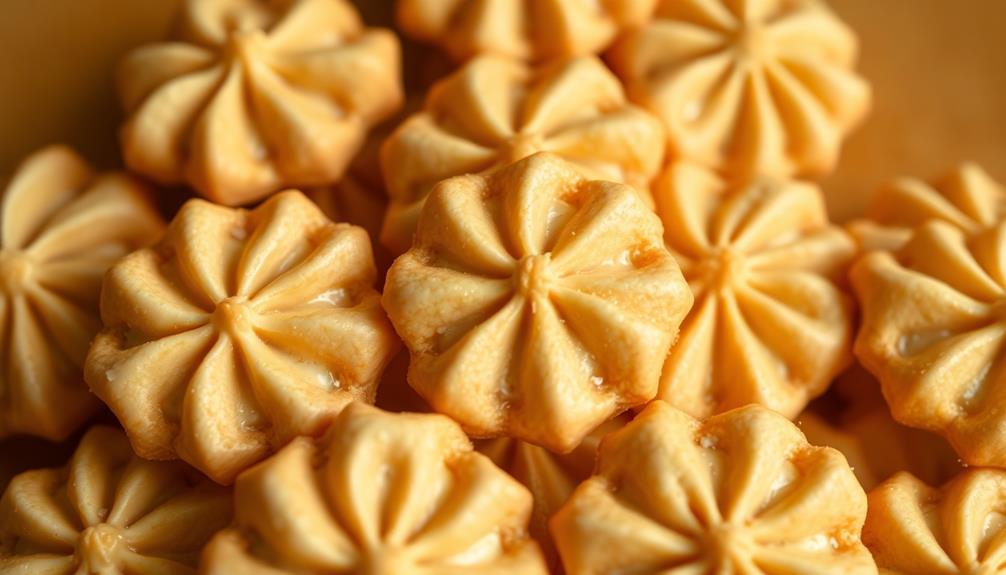
Preheat your oven to 350°F (175°C) – it's time to get baking!
Next, cream the butter and sugar together until light and fluffy.
Don't forget to add the egg and vanilla, then slowly incorporate the flour and salt.
Step 1. Preheat Oven to 350°F (175°C)

Preheat your oven to 350°F (175°C) to begin the baking process. This critical step ensures your oven is the perfect temperature for the delicate Swedish butter cookies.
As the oven heats up, the air inside will circulate and reach the desired temperature, readying the space for your tender, buttery treats.
Once the oven beeps, signaling it's reached the target temperature, carefully slide in the baking sheet loaded with perfectly portioned cookie dough.
The intense, dry heat will work its magic, causing the butter to melt and the cookies to rise and develop a gorgeous golden-brown color.
Keep a close eye on them, as the delicate nature of these treats means they can go from perfectly baked to overdone in the blink of an eye.
After 8-10 minutes, your kitchen will be filled with the mouthwatering aroma of freshly baked Swedish butter cookies, ready to melt in your mouth.
Step 2. Cream Butter and Sugar Together
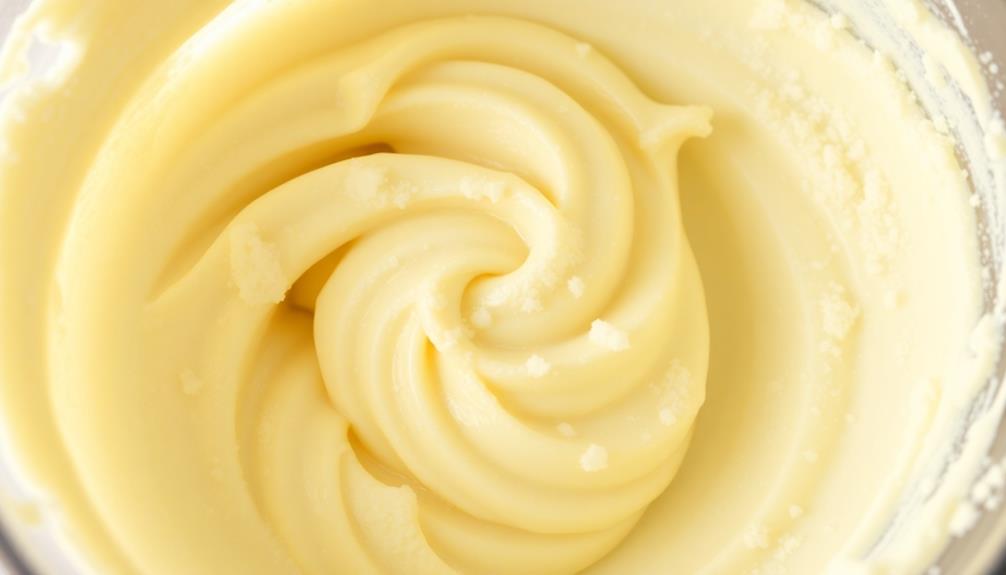
Starting the cookie preparation, cream the butter and sugar together in a large bowl. Use a hand mixer or stand mixer fitted with the paddle attachment to whip the butter and sugar until light and fluffy, about 2-3 minutes.
You'll notice the mixture transform from grainy to smooth and creamy. Isn't it satisfying to watch the transformation? Make sure to scrape down the sides of the bowl occasionally to ensure even mixing.
This creaming process incorporates air into the batter, which will result in a light, melt-in-your-mouth texture for your Swedish butter cookies. Keep an eye on the mixture, and when it's reached the desired light and fluffy consistency, you're ready to move on to the next step.
Isn't it exciting to see your cookie dough come together? With the butter and sugar beautifully combined, you're well on your way to baking delectable Swedish treats.
Step 3. Add Egg and Vanilla

With the butter and sugar now beautifully creamed, you're ready to add the egg and vanilla to your cookie dough. Crack that fresh egg into the bowl, being careful not to let any shell bits fall in. Use a fork to gently whisk the egg, then pour it right into the creamed butter and sugar. Stir everything together until the egg is fully incorporated.
Next, it's time for the fragrant vanilla extract. Just a teaspoon or two will do the trick, adding a lovely warmth and depth of flavor to your cookies. As you pour in the vanilla, take a deep breath and enjoy the aroma – it's sure to get your taste buds tingling in anticipation.
Stir the vanilla in thoroughly, making sure it's evenly distributed throughout the dough. With the egg and vanilla now blended in, your cookie dough is really starting to come together. The rich, buttery base is infused with that classic vanilla essence, creating a beautifully balanced flavor that's just begging to be baked into irresistible Swedish butter cookies.
Step 4. Add Flour and Salt
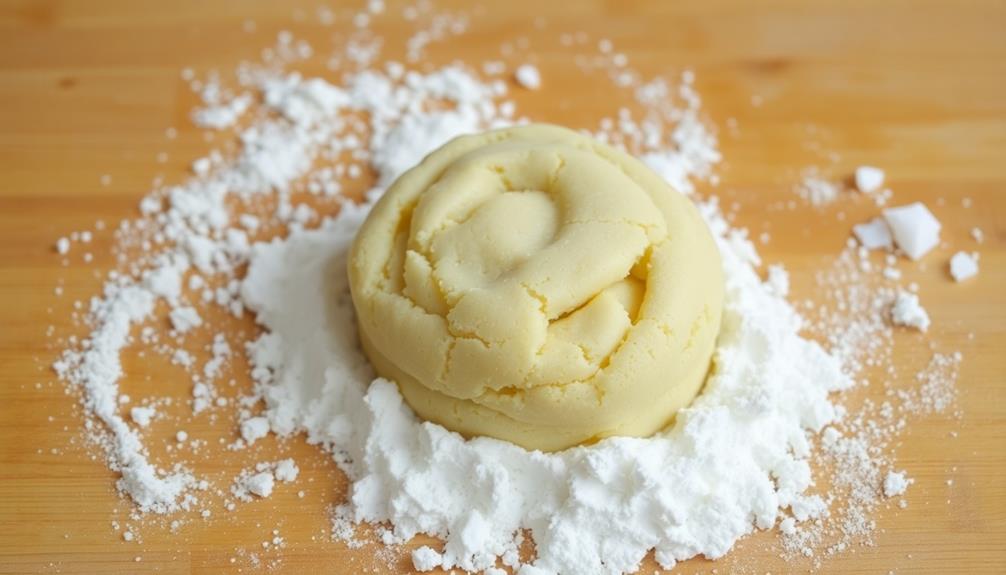
Next, you'll want to add the dry ingredients to your cookie dough. In a separate bowl, whisk together 2 cups of all-purpose flour and 1/4 teaspoon of salt.
This dry mixture will help create the perfect texture for your spritz cookies – delicate and tender, with just the right amount of crispness. Remember, the use of butter in your dough not only adds flavor but also contributes to the moisture that makes these cookies so delightful, as butter is a key ingredient in many baking recipes butter adds flavor and moisture.
Gradually incorporate the flour and salt into your buttery dough, mixing until everything is well combined. You'll want to work the dough gently, taking care not to overwork it, as that can result in tough cookies.
Once the dry ingredients are fully incorporated, your dough is ready to be piped or pressed into your desired cookie shapes. Get creative with the designs – from classic rounds to festive trees or stars.
These little bites of buttery goodness are sure to melt in your mouth and delight your family and friends.
Step 5. Press Dough Through Cookie Press

Once the flour and salt have been thoroughly incorporated, it's time to press the dough through a cookie press.
Grab your trusty cookie press and prepare to unleash the magic. Gently pack the dough into the barrel, being careful not to overfill it.
Position the press over your baking sheet, then slowly pull the lever, allowing the dough to extrude through the decorative disk at the end.
Watch in delight as the dough takes shape, forming delicate, intricate patterns on the sheet.
Repeat this process, spacing the cookies about an inch apart, until you've used up all the dough.
Remember to switch out the disks to create a variety of shapes and designs – from classic wreaths and stars to more elaborate florals and geometrics.
With each press, you're crafting edible works of art, ready to delight your family and friends.
Final Thoughts
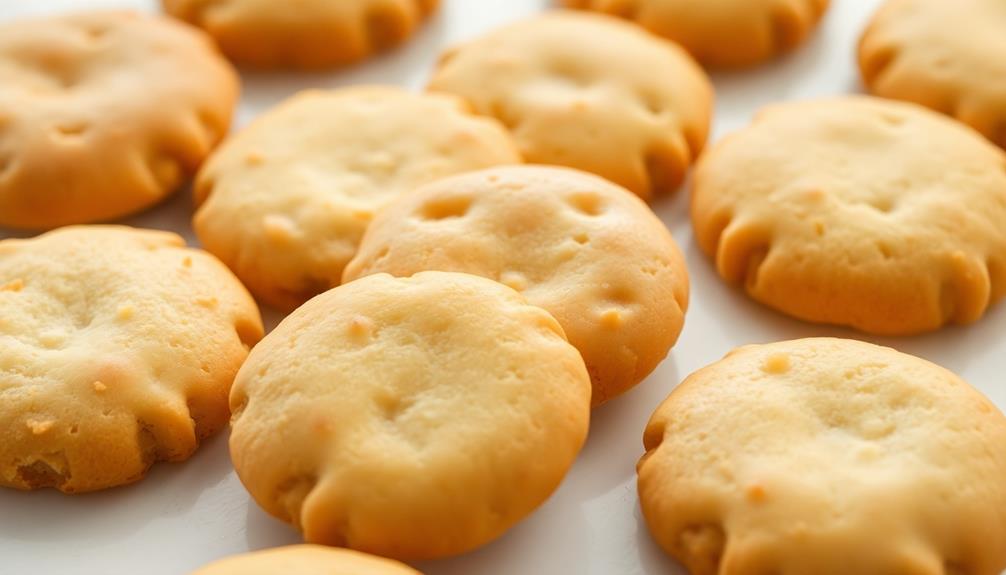
Baking these Swedish butter cookies is a delightful experience that you'll want to revisit time and time again. The satisfying process of pressing the dough through the cookie press and watching the intricate designs take shape is truly captivating.
The aroma of the buttery dough baking in the oven is simply divine, filling your kitchen with a mouthwatering scent that will have your family eagerly awaiting the final product. Incorporating nutritional benefits like chia seeds into baked treats can enhance their health profile.
Once cooled, these delicate cookies melt in your mouth, leaving you craving more of their rich, buttery goodness. The versatility of the recipe allows you to experiment with different shapes and flavors, keeping the tradition alive while putting your own creative spin on it.
Whether you enjoy them on their own or paired with a hot cup of tea or coffee, these Swedish butter cookies are a timeless delight that will bring joy to any occasion.
Frequently Asked Questions
How Long Do the Cookies Stay Fresh?
The cookies'll stay fresh for up to a week if you store them in an airtight container at room temperature. But you'll probably gobble them up long before that, they're so delicious!
Can I Substitute Any Ingredients in the Recipe?
You can certainly substitute some ingredients in the recipe to suit your taste preferences. Try swapping out the flour for a gluten-free alternative or using a different type of nut in place of the almonds.
What's the Best Way to Store the Cookies?
The best way to store the cookies is to place them in an airtight container at room temperature. This will help preserve their delicate texture and prevent them from drying out or becoming stale. Enjoy!
Can I Freeze the Dough for Later Use?
Yes, you can freeze the dough for later use. Simply shape it into a log, wrap it tightly, and freeze it for up to 3 months. When ready to bake, thaw it in the fridge overnight and proceed as usual.
Are These Cookies Suitable for People With Dietary Restrictions?
You'll need to consider the dietary restrictions of your guests when determining if these cookies are suitable. They may not be appropriate for those with lactose intolerance or gluten sensitivities, so it's best to inquire about any dietary needs beforehand.
